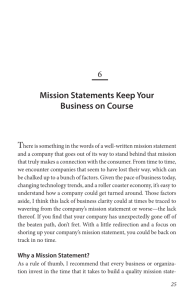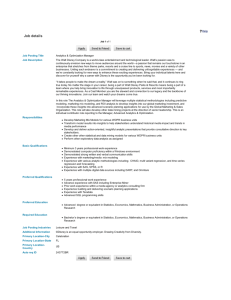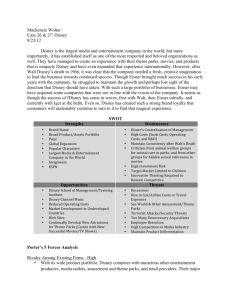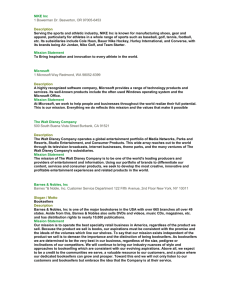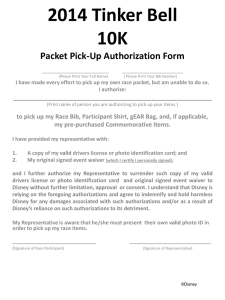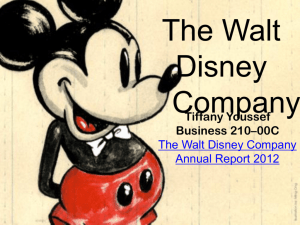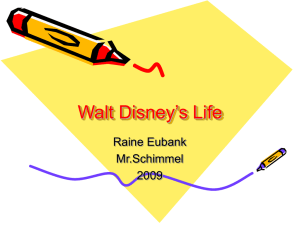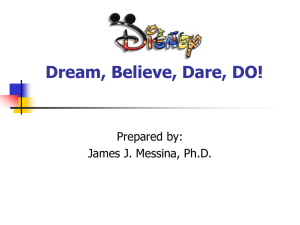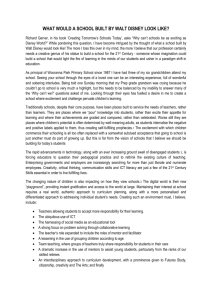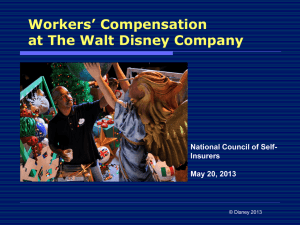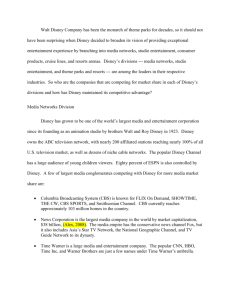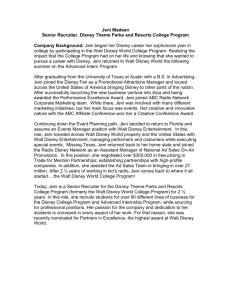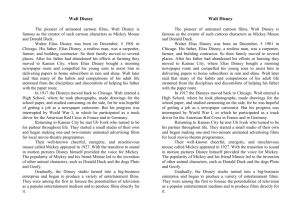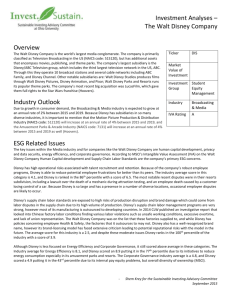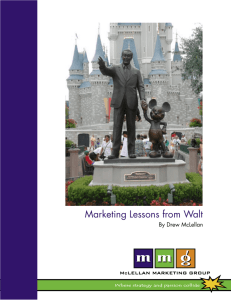Interactive Media
advertisement
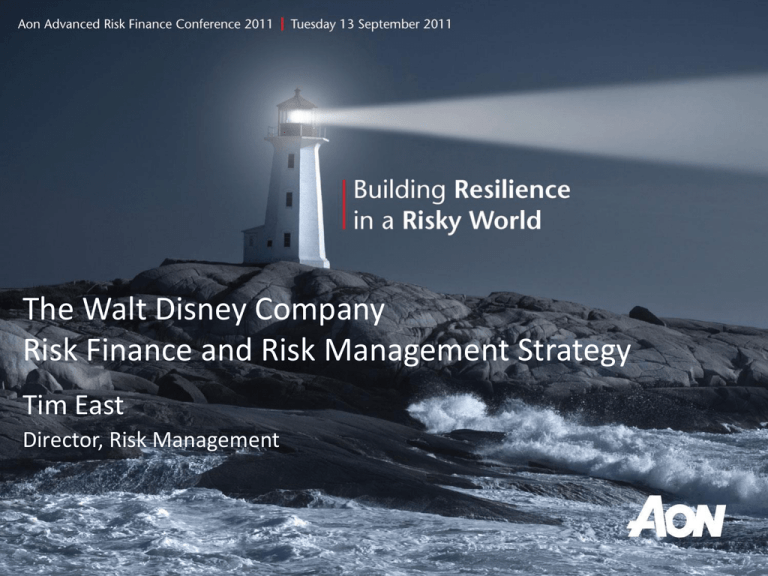
The Walt Disney Company Risk Finance and Risk Management Strategy Tim East Director, Risk Management Organization of The Walt Disney Company The Walt Disney Company Corporate Media Networks Distribution of Content Theme Parks and Resorts 11 Theme Parks and Resorts Consumer Products Licencing and Retail Studio Entertainment Interactive Media Creation of Content Interactive Media and Internet Media Networks 3 Parks & Resorts 4 Consumer Products 5 Studio Entertainment 6 Interactive Media 7 Organization of The Walt Disney Company The Walt Disney Company Corporate Media Networks Theme Parks and Resorts Consumer Products 2010 Revenue: $17.2B USD 2010 Revenue: $10.7 B USD 2010 Revenue: $2.7 B USD Studio Entertainment Interactive Media 2010 Revenue: $6.7 B USD 2010 Revenue: $.76 B USD Growth in Revenue by Year Revenue in U.S.$ Millions $39,000 $38,063 $37,843 $38,000 $37,000 $36,149 $36,000 $35,510 $35,000 $34,000 Revenue $33,747 $33,000 $32,000 $31,000 2006 2007 2008 2009 2010 Highlights • • • • • Revenue up 5% Net income attributable to Disney up 20% Toy Story 3 – No. 1 animated movie of all time Acquisition of Marvel Entertainment Investing significantly in expanding and enhancing the theme parks • Began Shanghai project How Disney Manages Risk • Risks are identified, defined and quantified • Risk management strategies are developed and implemented – Leadership with the business units – Partnership with external resources and providers • Corporate Risk Management reports through Corporate Treasury – Corporate Risk Management is focused on pure risks – Financial/operational risks managed by Treasury, Finance and the Business Units • Business Unit risk management specialists report to the leaders of the business unit Risk Identification and Quantification • Risk identification in our business is a constant process and repetitive loop • Various techniques and methods are used depending on the exposure – Risk mapping – Dynamic analysis and simulation – Risk modeling • Whether a risk is insurable is a second-question • Three key risk areas Risk Identification and Quantification • Property and Business Interruption Risk Identification and Quantification • Work Injury or Illness Risk Identification and Quantification • Motion Picture and Television Production Risk Tolerance and Appetite • Risk tolerance considers reputational, financial and operational impacts • Processes used depend on the nature of the risk • Strong balance sheet and cash flow increases our financial tolerance • Managing and mitigating a risk is the first strategy • If a pure risk can be economically transferred we use commercial insurance Risk Financing • Risk retention and self-insurance • Captive insurance – Alameda Insurance Company – Buena Vista Insurance Company • Captives are used strategically – Internally: To help business units understand risk – Externally: To improve placement and reduce the cost-of-risk • Alternative Risk Transfer – CAT bonds – Various weather derivatives and methods Selling Risk • We develop long-term partnerships with insurers • Partners must know and understand our business • What sells our risk: – Our people – Our processes – Our infrastructure The Future of Risk Management • Technology • Global risk takers • Continued need for: – – – – Long-term Vision Trusting Relationships Creative Problem-solving Communicating Effectively
